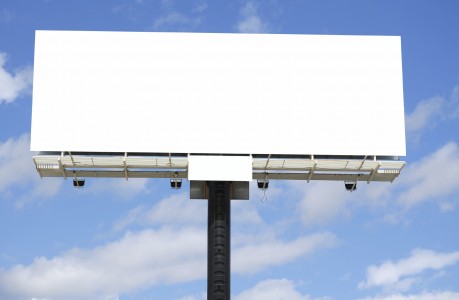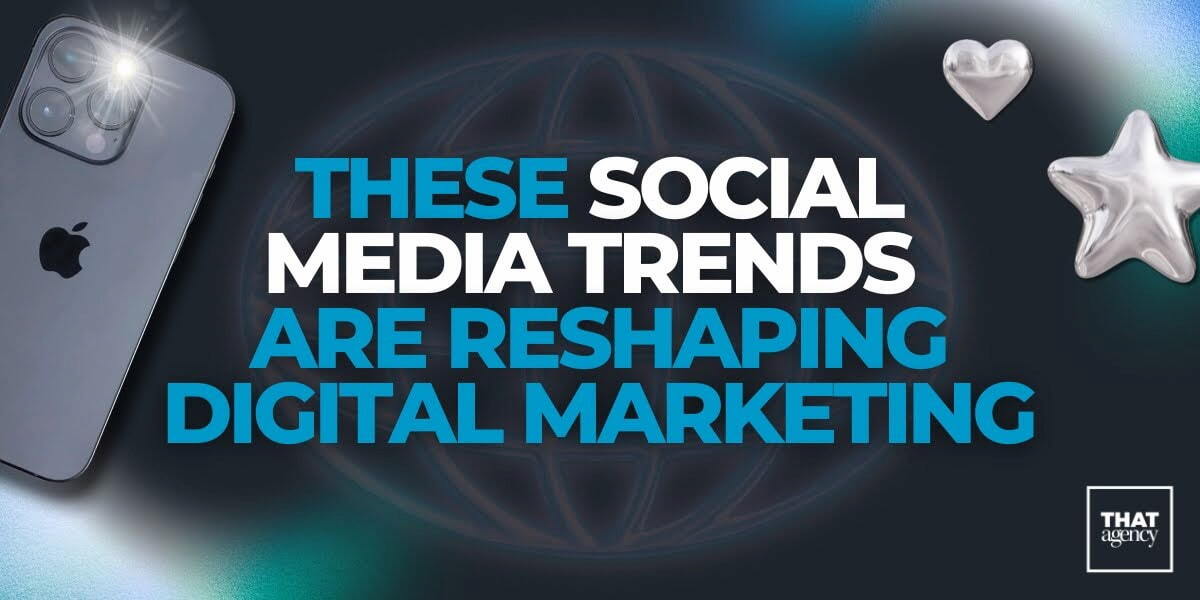Continuing on our process from Day 1 at this point it's important to consider how people get to the checkout process. Assuming you have improved the rate of conversion actions from within the shopping cart, this is the next main area to look at...
At this level, the call to action is any command, link, or button that suggests a user interaction. The more persuasive and compelling your call to action, the more likely someone will continue on to the shopping cart. If your calls to action are weak, average or non existent, you can't expect to get many sales, now can you? Take a look at this billboard ad...

I like it, it's clean, it's modern, it's simple - I'm just not sure what it's selling yet...
Hint: don't be lame and assume that people know exactly what to do.
You'll have to tell them. However, it does take some finesse like we'll find out in a minute. To start here are some questions to ask to make sure you actually do indeed have a strong enough call to action.
- Is it specific? Do you suggest what you want your visitor to do?
- Have you tested several variations of words, buttons, placement, font, etc?
- Do you provide good on-page support to your claims so they will what you suggest?
The largest consideration for calls to action is to "mind your manners". Getting someone to click your call to action is a delicate balance of confidence and reserve.
Ask like a caveman and expect poor results!

"BUY NOW!!! Organic Mammoth Juice! Make you have 10 hour energy!"
Often this boils down to not asking too much too quickly. Imagine that your website is like a relationship. You ultimately want this person to "marry" you or in call-to-action terms, sign up for a 6 month membership to whatever it is your selling. Move too quick and you lower your conversion rate...
Jane: "Hi, what's your name?"
Jim: "My name is Jim, I am a web designer, I love you, marry me?"
Jane: "Wha?! No! Get lost creep!"
"Jim" is like many websites where he is too forward and doesn't provide any incentive for Jane to be interested in his call to action. As you know (unless you're like most SEO's who have the manners of a caveman) the conversation should go a little more like this:
Jane: "Hi, what's your name?"
Phil: "My name is Phil, I am a web designer, I am really into making custom fonts and specialize in logo design."
Jane: "Wow! that's exactly what I love to do!"
Phil: "Thats cool! Why don't we grab a coffee and go talk about it?"
Jane: "That sounds great! Let's go!"
In this scenario Phil communicates clearly and confidently his unique selling point (USP) and only asks to continue the discussion on a deeper level scoring a date...

Alright! Way to go Phil!
Initial calls to action should be treated as such. Later when he asks to get married (or for a six month subscription to whatever it is your selling) he has a much higher likelihood of success than Jim ever had.

Poor Jim...Serves you right for having no manners!
Why does this scenario occur so often? The answer is fear. "What if they don't know I'm selling something? I need to shout as loudly as possible at you to make sure you know I'm selling something!!"
Here's some food for thought, when was the last time someone yelling at you convinced you to buy something? It's more likely you researched other options (other websites), read reviews (testimonials), and asked other peoples opinion (social media).
So how does this translate into the website. If you are selling a product, don't ask for the buy right away. Use compelling images and show your best USP. Then suggest where they can find more detailed information on the product i.e. your product page. This page should have everything and is where you have the "purchase" or "buy now" phrasing. Ask too early and you are surely to turn people away.
As was true in the last post, I encourage you to answer these questions as brutally honest as possible. Look at whatever analytical software you have set up to see the common areas where people are leaving. Can you lower this number? Try out different variations to see what works best. Once you have made some improvements and see statistical increases, it’s time to move on to Day 3 - Optimizing Your Landing Pages




